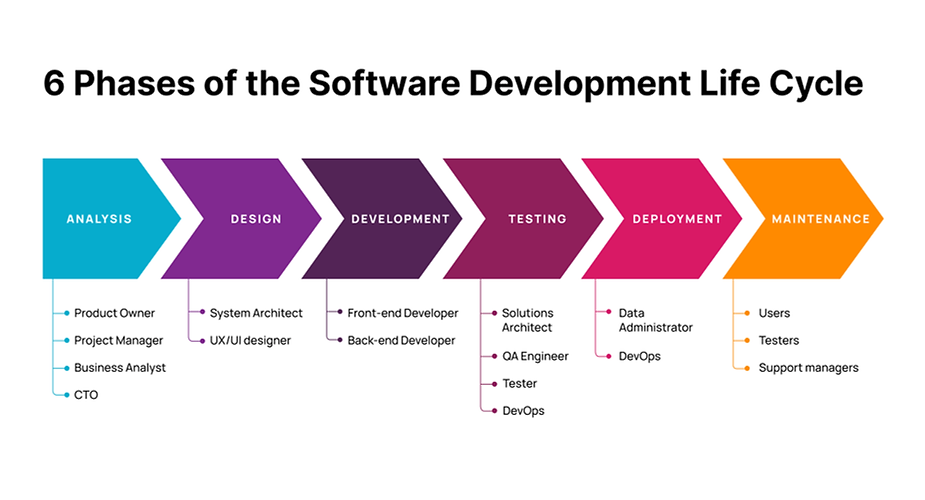SDLC – SOFTWARE DEVELOPMENT LIFE CYCLE
Introduction
Software development is a complex process that involves multiple stages, each of which plays a critical role in ensuring the success of the project. The SDLC is a framework that guides the software development process from the initial concept to the final product. The SDLC involves several stages, including planning, analysis, design, implementation, testing, and maintenance. Each stage is essential and contributes to the overall success of the project.


Planning
The planning stage is the first stage of the SDLC, and it involves defining the project’s scope, objectives, and requirements. This stage is critical because it sets the foundation for the entire project. During this stage, the project team defines the project’s goals, identifies the stakeholders, and outlines the project’s budget and timeline. The planning stage is also the stage where the project team identifies the resources needed for the project, such as personnel, equipment, and software tools.
Analysis
The analysis stage is the second stage of the SDLC, and it involves gathering and analyzing information about the project’s requirements. This stage is essential because it helps the project team understand the project’s objectives, constraints, and risks. During this stage, the project team identifies the functional and non-functional requirements of the system, such as performance, security, and usability. The analysis stage is also the stage where the project team identifies the system’s inputs, processes, and outputs.
Design
The design stage is the third stage of the SDLC, and it involves creating a detailed design of the system. This stage is critical because it sets the foundation for the system’s implementation. During this stage, the project team creates a detailed design of the system that includes the system’s architecture, data model, and user interface. The design stage is also the stage where the project team identifies the programming languages, frameworks, and software tools needed for the implementation.
Implementation
The implementation stage is the fourth stage of the SDLC, and it involves developing and coding the system. This stage is critical because it transforms the design into a working system. During this stage, the project team develops the system’s components, such as modules, classes, and functions. The implementation stage is also the stage where the project team integrates the system’s components and performs unit testing to ensure that each component works correctly.
Testing
The testing stage is the fifth stage of the SDLC, and it involves testing the system to ensure that it meets the requirements. This stage is critical because it ensures that the system is of high quality and meets the user’s needs. During this stage, the project team performs several types of testing, such as unit testing, integration testing, system testing, and acceptance testing. The testing stage is also the stage where the project team identifies and fixes the defects in the system.
Maintenance
The maintenance stage is the final stage of the SDLC, and it involves maintaining and updating the system. This stage is critical because it ensures that the system remains functional and meets the user’s needs. During this stage, the project team performs several maintenance tasks, such as bug fixes, security updates, and feature enhancements. The maintenance stage is also the stage where the project team performs the system’s retirement when it is no longer needed.
Conclusion
The SDLC is a framework that guides the software development process from the initial concept to the final product.
At first, our opinion was that the most important stage is the implementation of an information system in the organization, but after a while we realized that if each of the above stages are not cooked to the required extent , they can cause the project to fail.
The SDLC involves several stages, including planning, analysis, design, implementation, testing, and maintenance. Each stage is essential and contributes to the overall success of the project. The planning stage sets the foundation for the project, the analysis stage ensures that the system meets the requirements, the design stage creates a detailed design of the system, the implementation stage develops and codes the system, the testing stage ensures that the system meets the requirements, and the maintenance stage maintains and updates the system. Therefore, each stage of the SDLC is equally important and contributes to the overall success of the project.

— Jeevitha